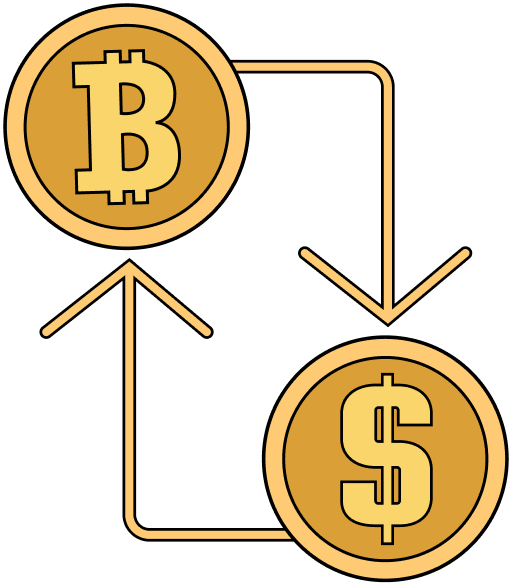Symbiosis Finance is a multi-chain non-custodial liquidity protocol enabling token swaps across different blockchains. It solves DeFi’s liquidity fragmentation problem by connecting several networks on one platform. Users can move assets quickly without managing multiple wallets or bridges. The protocol supports major blockchains including Ethereum, Binance Smart Chain, Polygon, Avalanche, and more.
Introduction
Symbiosis Finance focuses on interoperability in DeFi. With multiple decentralized applications, tokens often become scattered across chains, making asset transfers cumbersome. Symbiosis provides a platform where tokens can be swapped across chains while remaining non-custodial.
The protocol allows one-click swaps, simplifying cross-chain operations as easily as a single decentralized exchange transaction. This enhances liquidity accessibility and user experience within DeFi ecosystems.
History of Symbiosis Finance
Founded in 2021 by a group of crypto developers and enthusiasts, Symbiosis was created to solve liquidity silos. Previously, users transferring tokens across chains relied on complex bridges or centralized exchanges.
The founders introduced Symbiosis as a decentralized alternative with automatic swaps between networks. The native SIS token supports protocol funding and community governance.
Since its launch, Symbiosis Finance has added more blockchains, partnered with DeFi projects, and established liquidity pools to enable seamless cross-chain trades. Its approach combines automated market-making with interoperability mechanisms, attracting attention in the DeFi space.
Technology, Security and Functions
Symbiosis Finance integrates cross-chain bridges, decentralized exchanges, and automated liquidity protocols.
-
Cross-Chain Swaps – Allows tokens to move between chains without central intermediaries using relayers and liquidity pools.
-
Non-Custodial Design – Users retain control of their assets via smart contracts, enhancing transparency and minimizing reliance on third parties.
-
Security Features – The protocol is externally audited, leveraging cryptography and validator networks to reduce single-point failures.
This technical framework enables cross-chain swaps that feel like normal decentralized exchange operations.
Symbiosis’s SIS token has multiple functions:
-
Governance – Token holders can influence protocol updates and integrations.
-
Staking and Rewards – Users stake SIS to secure the network and earn incentives.
-
Liquidity Incentives – Providers receive SIS for supporting cross-chain pools.
-
Fee Payments – SIS can be used to pay network or transaction fees.
This model promotes community engagement while ensuring liquidity and governance sustainability.
Supported Blockchains and Assets
Symbiosis Finance supports multiple blockchains. It started with Ethereum and Binance Smart Chain, later adding Polygon and others.
Multi-chain support allows users to transfer value without leaving the decentralized ecosystem. For example, USDT can move from Ethereum to Polygon within a single transaction. Continuous expansion ensures versatility as DeFi moves toward a multi-chain future.
Features of Symbiosis Finance
Symbiosis provides several user-focused features:
-
One-Click Swaps – Switch tokens across chains in a single transaction.
-
Liquidity Pools – Users supply liquidity and earn returns.
-
Wallet Integration – Supports wallets like MetaMask for seamless access.
-
Decentralized Architecture – Operates without custodial control, adhering to DeFi principles.
-
API and SDK Access – Developers can embed Symbiosis functionality into apps and websites.
These elements appeal to individual users and projects seeking cross-chain interoperability.
How to Use Symbiosis Finance
-
Connect Wallet – Link a crypto wallet like MetaMask to the platform.
-
Choose Swap – Select the token and target blockchain.
-
Confirm Transaction – The protocol calculates the route and fees before confirmation.
-
Receive Tokens – Assets appear in the wallet on the destination chain.
This process reduces complexity and removes multiple steps common to cross-chain transfers.
Membership in Cryptocurrency Community
Symbiosis Finance strengthens DeFi by improving interoperability. As blockchain ecosystems grow, seamless token movement becomes increasingly relevant.
Its decentralized and user-friendly solution reduces reliance on centralized exchanges, allowing users to remain in decentralized systems. It promotes inter-chain liquidity and enables smaller networks to interact with larger ecosystems, attracting users who might otherwise be limited to a single chain.
Comparison With Other Interoperability Solutions
Symbiosis is compared with Thorchain, AnySwap (Multichain), and centralized exchanges:
-
Thorchain – Swaps native currencies like BTC and ETH but needs dedicated nodes.
-
AnySwap/Multichain – Offers many bridging services but has faced past security concerns.
-
Centralized Exchanges – Enable cross-chain swaps but require custody, which some users avoid.
Symbiosis stands out by offering one-click swaps within a fully decentralized architecture, balancing simplicity and functionality.
Challenges and Limitations
Despite advantages, Symbiosis faces challenges:
-
Security Risks – Cross-chain protocols are complex and have experienced exploits.
-
Liquidity Dependence – Effectiveness relies on active, deep liquidity pools.
-
Competition – Many projects aim to solve interoperability, requiring innovation to maintain distinction.
These factors emphasize the need for continuous development, auditing, and community support.
Future Prospects
Symbiosis Finance plans to expand support for additional chains and integrate with more decentralized applications. Potential upgrades include NFT support, additional staking options, and deeper DeFi integrations requiring cross-chain functionality.
As multi-chain adoption grows, Symbiosis may facilitate smoother network interaction, with liquidity and usability being crucial for long-term success.
Conclusion
Symbiosis Finance is an open liquidity protocol enabling near-instant cross-chain swaps. Founded in 2021, it addresses the growing need for blockchain interoperability. With non-custodial swaps, liquidity incentives, and support for multiple networks, it contributes to DeFi’s multi-chain future. Despite challenges like liquidity demands and security risks, Symbiosis represents a valuable step toward global interconnected blockchain ecosystems. By combining usability and decentralization, it brings DeFi closer to mainstream adoption worldwide.














 Twitter
Twitter
 Telegram
Telegram
